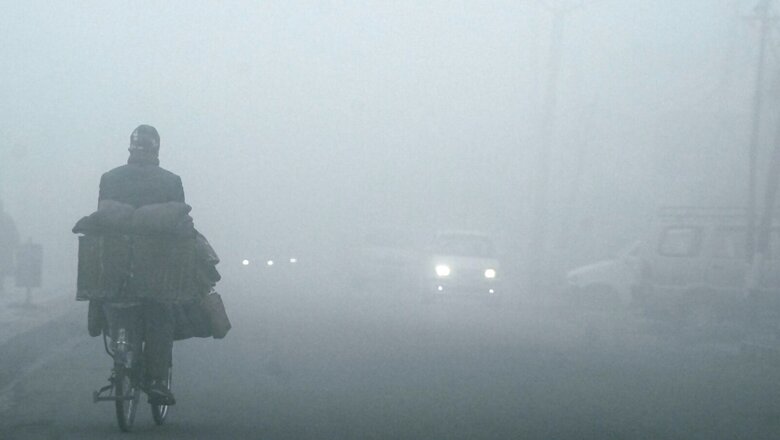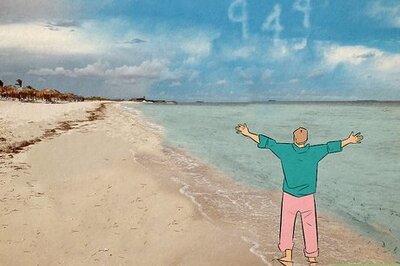
views
Delhi will usher in New Year in a chilly weather with cold wave walloping parts of national capital on New Year’s eve, said Indian Meteorological department. The weather department added that the winter chill, too, would intensify further in early January.
Although the city woke up to a cold morning on Saturday, Delhi’s air quality stood in the ‘Very Poor’ category with the AQI (Air Quality Index) being 369.
Govt Invokes Curbs under Stage III of GRAP
In view of the spike in air pollution, the Centre’s air quality panel directed implementation of curbs under Stage III of Graded Response Action Plan (GRAP) in Delhi-NCR, including a ban on non-essential construction and demolition work. The authorities have also advised people to work from home or carpool to office to prevent from further pollution.
Delhi’s 24-hour average air quality index stood at 399 on Friday, just two notches below the severe category.
The Sub-Committee on GRAP, at a review meeting, noted that the AQI is likely to slip into the severe category due to calm winds and stable atmospheric conditions.
Cold conditions have abated in north India, including Delhi, for now under the influence of a western disturbance, characterised by warm moist winds from the Middle East. However, the minimum temperature will start dropping again from December 31, meteorologists said.
Mercury To Drop To 6℃ Today
The mercury will drop to 6 degrees Celsius on Saturday and further to 4 degrees Celsius by Monday (January 2). Dense fog and cold wave conditions are predicted in parts of Delhi from January 1 to 4, the IMD forecast.
On Thursday, the Safdarjung observatory, Delhi’s primary weather station, recorded a minimum temperature of 7 degrees Celsius against 6.3 degrees Celsius on Wednesday, 5.6 degrees on Tuesday and 5 degrees on Monday.
The maximum temperature settled at 23.7 degrees Celsius, three notches above normal.
Fourteen Trains Got Delayed
Fourteen trains to Delhi were delayed due to dense to very dense fog in other areas, a Railways spokesperson said. Weather experts said frigid north-westerly winds and reduced sunshine due to foggy weather had caused the spell of cold wave and below-normal day temperatures in northwest India.
A western disturbance led to a fresh spell of snowfall in the mountains on December 25-26 and cold northwesterly winds swept through the plains after its retreat.
Intense Chill in January
A similar phenomenon involving a fresh WD will lead to intense chill in early January, they said. A cold day is when the minimum temperature is less than or equal to 10 degrees Celsius below normal and the maximum temperature is at least 4.5 degrees below normal.
A severe cold day is when the maximum is 6.5 degrees or more below normal.
According to the IMD, ‘very dense’ fog is when visibility is between 0 and 50 metres, 51 and 200 metres is ‘dense’, 201 and 500 ‘moderate’, and 501 and 1,000 ‘shallow’.
In the plains, the Met office declares a cold wave if the minimum temperature dips to four degrees Celsius or when the minimum temperature is 10 degrees Celsius or below and is 4.5 notches below normal.
A severe cold wave is when the minimum temperature dips to two degrees Celsius or the departure from normal is more than 6.4 degrees Celsius.




















Comments
0 comment